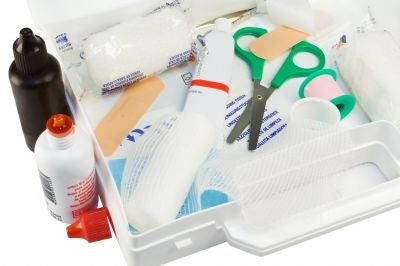If you reach for an over-the-counter antibiotic ointment such as Neosporin or Polysporin after getting a cut or scrape, you may be contributing to an alarming rise of a strain of drug-resistant bacteria, at least according to new research.
In a new study, Japanese researchers looked at 261 samples of methicillin-resistant Staphylococcus aureus (MRSA), including 21 samples of a strain called USA300, also known as flesh-eating disease.
They found that other MRSA strains were somewhat susceptible to some combination of the antibiotics typically found in over-the-counter ointments, bacitracin and neomycin. But the USA300 strains were resistant to both, which the authors attribute to a possible overexposure to antiobiotic ointments.
The study will be published in the October issue of the journal Emerging Infectious Diseases.
MRSA can penetrate wounds and cause deadly bloodstream and lung infections. Even worse, prior research has found that in the US, hospitalizations related to USA300 strains have more than tripled between the years of 2004 and 2008.
Meanwhile, Johnson & Johnson, the manufacturer of Neosporin and Polysporin, has responded by saying that the study hasn't proven a connection between their products and the rise of MRSA. Health news website WebMD also notes that experts reviewing the study find the results intriguing but suggest that the research needs to be duplicated on a larger scale before making final conclusions.
Still, antibiotic resistance is an urgent concern, and WebMD suggests an alternative for your first-aid kid. Petroleum jelly, like Vaseline, might do the trick, stated Patrick S. Romano, professor of medicine and pediatrics at the University of California at Davis.
"The primary effect of the ointment is probably to act as a physical barrier to bacterial entry and as a moisturizer," he stated in the WebMD article. Keeping cuts and scrapes moist helps them heal faster.
Subscribe to Independent Premium to bookmark this article
Want to bookmark your favourite articles and stories to read or reference later? Start your Independent Premium subscription today.


Join our commenting forum
Join thought-provoking conversations, follow other Independent readers and see their replies